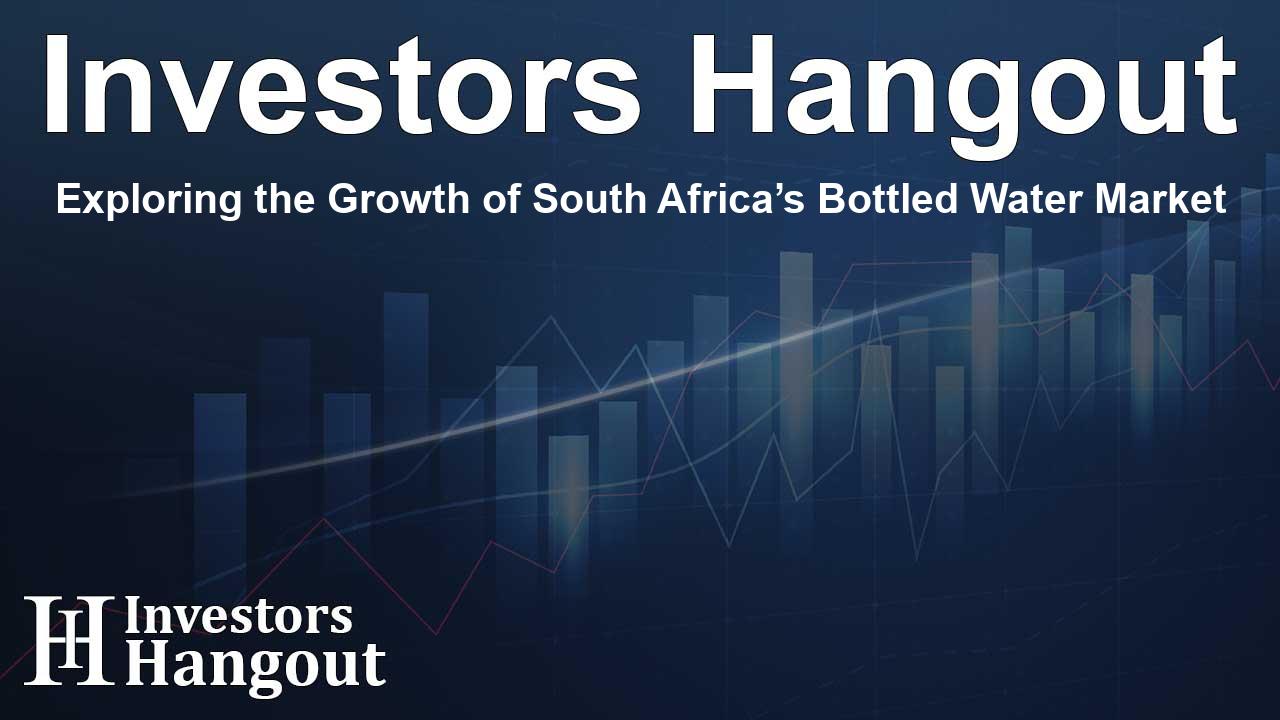Exploring the Growth of South Africa’s Bottled Water Market

The Bottled Water Market in South Africa: A Growing Sector
According to recent market research, the bottled water sector in South Africa is projected to expand significantly over the upcoming years. This growth is primarily driven by an urban-centric consumer base. As urban residents increasingly prioritize convenience and health, the demand for bottled water continues to rise.
Market Size and Forecast Analysis
Industry analysts estimate that the bottled water market in South Africa will grow by USD 143.9 million from 2024 to 2028, with a consistent compound annual growth rate (CAGR) of 2.75%. These figures reflect both consumer habits and environmental considerations influencing buying behavior.
Emerging Trends in Bottled Water
One of the most notable trends is the innovative packaging adopted by manufacturers. Eco-friendly options and luxury designs are capturing consumer interest. Notably, companies like Nestle SA are contributing to these initiatives by developing packaging solutions that minimize environmental impact, such as bottles made from bio-based materials.
Challenges Facing the Industry
Despite positive growth forecasts, the market faces challenges from substitutes such as juices and soft drinks, which may dilute bottled water sales. Moreover, competition is intense with an increase in product offerings in the beverage sector. This necessitates that bottled water brands diversify their product ranges and improve their marketing strategies to maintain market share.
Consumer Preferences and Marketing Strategies
Consumers today are more health-conscious, leading to a preference for bottled water due to concerns about the safety of tap water. This trend is further influenced by waterborne diseases and the need for accessible clean drinking water. Brands are leveraging social media platforms to enhance their reach and engage effectively with consumers to drive sales.
Market Segmentation Overview
The bottled water market can be segmented by product types, distribution channels, and geographical presence. The key product segments include still drinking water, sparkling water, and bottled spring water, catering to diverse consumer preferences.
Distribution Channels
Distribution channels encompass both off-trade and on-trade methods, allowing companies to strategically locate their products to meet consumer needs effectively. Retail outlets, including water bars, play a crucial role in making bottled water accessible to the general public.
Research Insights and Future Projections
Insights from various research reports indicate the bottled water market's growth trajectory will ultimately hit significant industry benchmarks, potentially reaching a market value of approximately USD 7 billion by the end of the decade. This expected increase underscores the importance of sustainable practices as manufacturers strive not only to meet consumer demand but also to uphold environmental standards.
Sustainable Practices and Innovations
To address environmental concerns, many brands are transitioning to using recycled PET bottles in their manufacturing processes. This shift is part of a broader commitment to sustainability, as companies respond to growing consumer awareness regarding plastic waste and resource conservation.
Frequently Asked Questions
What are the primary drivers of growth in South Africa's bottled water market?
The primary drivers include urbanization, health consciousness among consumers, and the increasing need for access to clean drinking water alternatives.
How do packaging innovations impact the bottled water market?
Packaging innovations enhance shelf appeal and product differentiation, attracting consumers while addressing ecological concerns.
What challenges does the bottled water market face?
Challenges include competition from alternative beverages, environmental impacts from production, and consumer price sensitivity.
What is the market segmentation in the bottled water industry?
The market is segmented by product type (still, sparkling, spring), distribution channels (off-trade, on-trade), and geographic regions.
How are companies addressing sustainability in bottled water production?
Brands are adopting eco-friendly processes, including using recycled materials for packaging and sustainable water sourcing practices.
About Investors Hangout
Investors Hangout is a leading online stock forum for financial discussion and learning, offering a wide range of free tools and resources. It draws in traders of all levels, who exchange market knowledge, investigate trading tactics, and keep an eye on industry developments in real time. Featuring financial articles, stock message boards, quotes, charts, company profiles, and live news updates. Through cooperative learning and a wealth of informational resources, it helps users from novices creating their first portfolios to experts honing their techniques. Join Investors Hangout today: https://investorshangout.com/
Disclaimer: The content of this article is solely for general informational purposes only; it does not represent legal, financial, or investment advice. Investors Hangout does not offer financial advice; the author is not a licensed financial advisor. Consult a qualified advisor before making any financial or investment decisions based on this article. The author's interpretation of publicly available data shapes the opinions presented here; as a result, they should not be taken as advice to purchase, sell, or hold any securities mentioned or any other investments. The author does not guarantee the accuracy, completeness, or timeliness of any material, providing it "as is." Information and market conditions may change; past performance is not indicative of future outcomes. If any of the material offered here is inaccurate, please contact us for corrections.